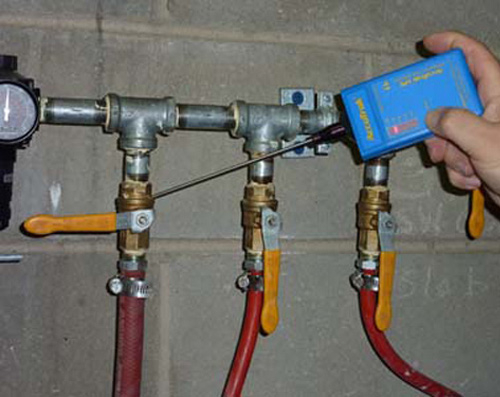The cone enables to concentrate a more substantial part of the acoustic stress on the indicator which mechanically escalates the tenderness of the instrument. It is also equipped with high-performance digital tracks to be able to increase the electric signs without adding a lot of noise.
The main volume with this indicator is 40 kHz. This frequency allows an excellent tenderness in the air and enables a greater tenderness to one other frequencies. At that frequency, the ultrasound may travel a good range with a minimum of signal reduction. This volume permits long distance recognition applications to be able to regard the protection strategy distances of high voltage components.
The unit is a musical instrument that transforms an ultrasound pressure into audible signals. It’s some sort of volume converter. An ultrasound acoustic shake is changed into electrical signals of the same frequency. These signals are converted into frequency by a electronic converter. That purpose enables a human’s head to find the presence of ultrasounds. That instrument is designed with still another cone that enables an immediate productivity of the noise signal. An sound result enables the bond of a headset for purposes in very noisy conditions and for documenting with a PC.
The instrument is equipped having an automated sensitivity controller. A screen shows the ultrasound level. The system instantly sets the mandatory amount of amplification to permit a good volume conversion by the digital circuit. This amplification stage will undoubtedly be part of the value displayed. A 6 dB alternative suggests a twice larger existence and for a 20 dB, a signal 10 instances stronger. It’s possible with the check key setting the current obtain in order to let a better recognition in the event of really strong sourced elements of noise. A dot on the right-hand side of the digital monitor shows the automatic setting when turned on and the fixed-gain method when made off.
As for partial discharges, the ionization of a catch produces a direct effect in the air. These impacts of a pretty much solid strength could be discovered also through a security panel. The sound originating from this kind of discharge is far different than corona effects. The noise is less similar compared to the corona effect. Reducing air escapes in your seed may save tens and thousands of dollars annually. Squeezed air is one of the most costly kinds of power you can use in your plant, obviously, it’s one of the very functional, rapidly and powerful too.
When it’s “quiet time” in the place, walk across the machinery and listen. You’ll often hear the soft (or probably not too gentle) hissing of air escaping from the fatigue interface of one’s air valves. The noise of compressed air “chewing up your pounds” since it wafts to environment could be quiet if your air valves have mufflers in the exhaust ports, but still, it may be heard.
Also, there are commercially accessible ultra-sonic compressed air flow Superior Signal detectors on the market. If your plant doesn’t have a “quiet time”, which would permit you to actually hear the leaks yourself, buying an ultrasonic flow alarm would bring substantial payback in energy savings. Often you will have one air device attached to at least one air cylinder. Frequently that cylinder will undoubtedly be double acting – meaning it will have two air lines operating to it, and whilst the air valve changes right back and forth, air may instead movement to the tube through one range or the other. When it’s flowing in to one line to the cylinder, the other line is enabling the air at one other conclusion of the cylinder to movement through the valve to exhaust.
While an air device and cylinder are doing work obviously there will be air being exhausted continuously from the air valve fatigue ports. It’s when the machine is down, when it’s performing number of good use – and ideally income generating work for you – that air should not be escaping through the device fatigue ports. Now that loss in squeezed air is just that; loss – of gains – of money. Inside, both stops of the cylinder are separated by a piston. The piston is what pushes the pole out and right back since the tube cycles. About that piston is going to be an air close that “crunches” between the side of the piston and the interior of the tube barrel, efficiently preventing air from flowing by (bypassing) the piston.
